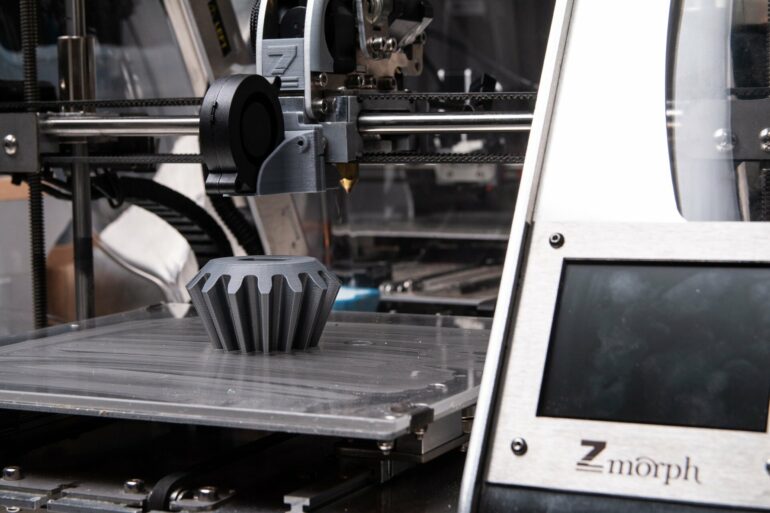While millions of people around the world enjoy renewed mobility from hip and knee replacements, many don’t realize that the materials used in such implants have basically stayed the same since the 1960s.
Originally designed for rocketry and the US space program, the material, titanium, is strong, corrosion resistant, and lightweight, but it isn’t particularly well-matched to human bone and tissue, often leading to an implant’s eventual failure.
The world of 3D printing is rapidly changing how materials can be designed, allowing for the materials development that can better meet societal needs in industries such as biomedicine and aerospace and reviving the manufacturing industry in the U.S., according to a new paper published in the journal Materials Today.
Led by Amit Bandyopadhyay, professor in the School of Mechanical and Materials Engineering, the researchers provide a roadmap for industry and academics to use 3D printing, also known as additive manufacturing, to design new alloys, which are materials made up of two or more metallic elements.
“With 3D printing, we can actually go back and start re-designing these alloys with specific purposes, and that is the beauty of it,” Bandyopadhyay said. “We will see in the next decade a variety of new alloys will be designed using 3D printing.
“It is not just a platform to make a shape. It is also a platform to create new compositions for specific applications.”
In the case of the hip and knee implants, for instance, researchers over the years have added coatings to try to improve compatibility. Meanwhile, hip and knee replacement surgeries often have to contend with infection on the implants when bacteria find a nice site to grow.
“Perhaps it’s a good idea to go back to the drawing board and re-design an alloy that has better compatibility or is bacteria resistant,” Bandyopadhyay said.
In the past, industries have been held back from re-designing materials because of the expense involved.
“With additive manufacturing or 3d printing, you can make a structure for your need on-demand with not only chemistry or composition control, but also with your desired functionalities at limited cost, time, and maintaining a smaller manufacturing footprint,” said Susmita Bose, a co-author on the paper and professor in the School of Mechanical and Materials Engineering.
In the work, the researchers outlined the challenges that 3D printing creates. In developing new materials, researchers need to have a good understanding of their goal in developing a product.
“This technology platform gives you too many things you can do,” Bandyopadhyay said. “You can load 16 different elements and start making compositions and get a million different compositions. The first challenge is to know what you’re really looking for.”
The researchers also emphasize that finding a successful recipe for an alloy will also mean that it has to be tested for regular manufacturing processes, making sure that it can be made consistently each time. Furthermore, new alloys will also require being able to pass through regulatory review processes.
In spite of the challenges, 3D printing is already changing the face of manufacturing in the U.S., said Bandyopadhyay. The technology is being used to print out products, such as implants, that are tailored specifically to people’s needs, and the US has become a leader in 3D printing manufacturing.
“Most of these implants are being manufactured and used in the US,” he said. “It has very effectively changed the manufacturing paradigm in the U.S.”
“It provides a great sense of satisfaction to see your vision and your research challenges coming to patients’ bedsides and being used in society,” Bose added.
More information:
Amit Bandyopadhyay et al, Alloy design via additive manufacturing: Advantages, challenges, applications and perspectives, Materials Today (2022). DOI: 10.1016/j.mattod.2021.11.026
Provided by
Washington State University
Citation:
Using 3D printing for alloy materials innovation (2022, January 19)



